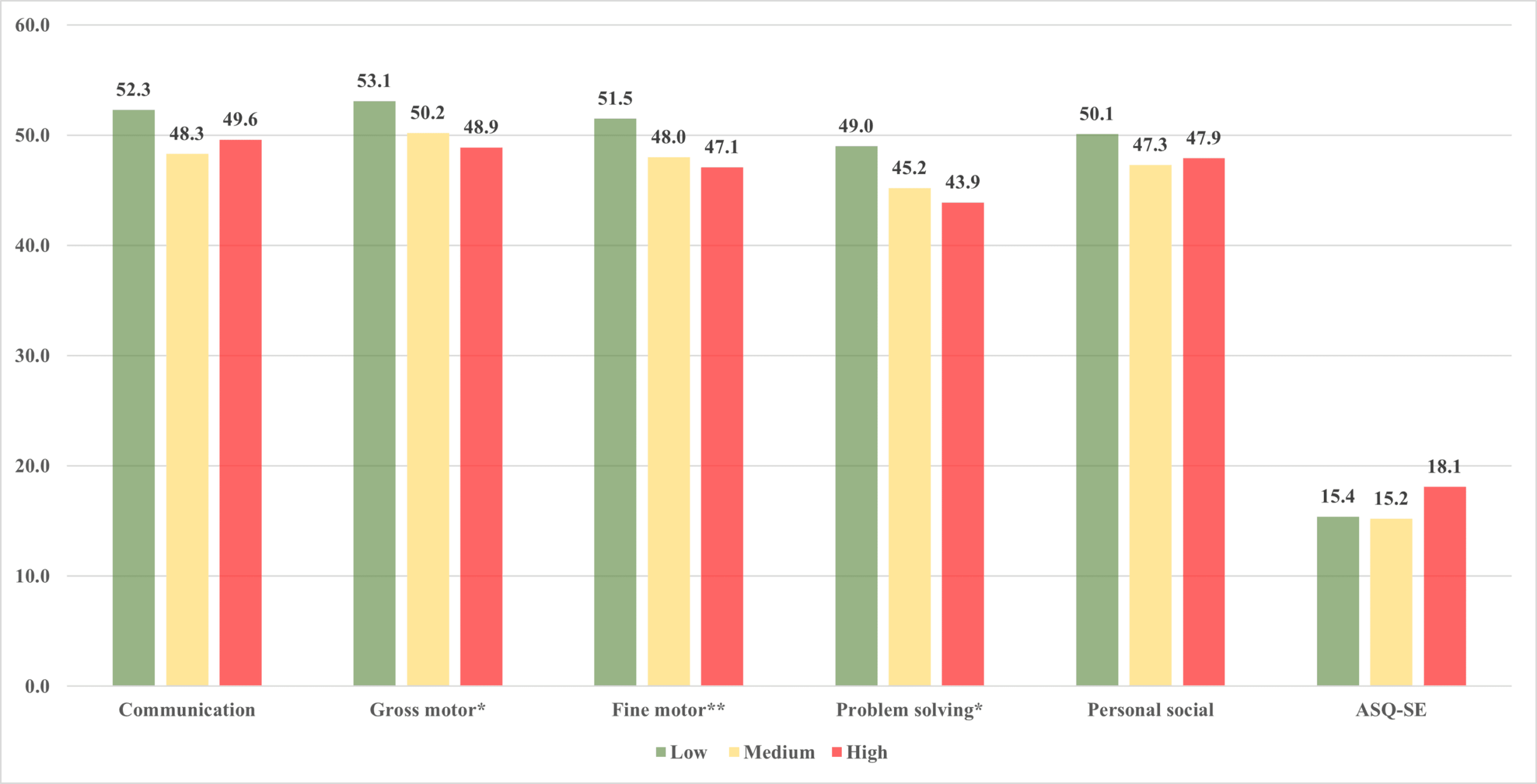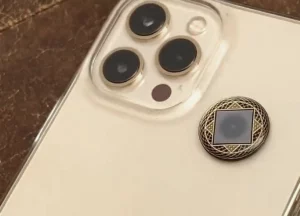A new peer-reviewed study in Cureus Journal of Medical Science has added serious weight to a growing body of evidence connecting household wireless radiation to neurodevelopmental harm in children. This was not another survey or speculative review but a cohort study that measured real, quantifiable levels of radiofrequency (RF) radiation inside homes and linked those readings to cognitive and motor development outcomes in infants.
The findings were striking: children in homes with higher RF radiation exposure scored significantly lower on fine motor and problem-solving tests, even after accounting for other factors like birth weight. Researchers concluded that there is an urgent need to monitor the neurodevelopment of children exposed to higher RF-EMF environments such as those near cell towers or with numerous wireless devices operating in the home.
Let’s break down what this means, why it matters, and how parents can take meaningful steps to protect their families.
The Study: Measuring Radiation Where Babies Live
Researchers followed 105 infants from birth to twelve months, resulting in 261 total developmental observations. The team used a professional-grade Selective Radiation Meter (Narda Worldwide, Germany) to measure real-time radiation levels inside the infants’ homes, capturing the actual electromagnetic environment rather than relying on self-reported phone use or screen time.
Each child’s development was tracked using the Ages and Stages Questionnaire (ASQ-3), a globally recognized screening tool for identifying developmental delays in five domains: gross motor, fine motor, communication, problem-solving, and personal-social development.
Levels of Exposure
Homes were categorized into three exposure levels:
Low exposure: Median 0.62 mW/m²
Medium exposure: Median 8.66 mW/m²
High exposure: Median 32.36 mW/m²
For context, these are levels commonly found in urban homes equipped with multiple wireless devices such as Wi-Fi routers, Bluetooth speakers, smart TVs, tablets, baby monitors, and phones.
The Findings: Higher Radiation, Lower Developmental Scores
Infants living in the high-radiation homes scored significantly lower in several domains critical to early development:
Fine Motor Skills: Adjusted odds ratio (aOR) 2.74, 95% CI 1.10–6.78
Problem-Solving: aOR 3.67, 95% CI 1.41–9.55
Gross Motor Skills: Also trended lower, though less statistically significant
Children with lower birth weights were at additional risk, showing compounded developmental vulnerabilities when combined with higher radiation exposure.

Importantly, distance from the nearest cell tower was not a reliable predictor. This means that the wireless devices inside the home, not just nearby towers, are significant contributors to exposure.
The authors concluded, “There is a need to monitor the neuro-development of children in whom RF-EMF radiations are expected to be higher (such as very close to cell phone towers, too many gadgets in the house).”
Why This Matters: Children Are Not Small Adults
Children’s brains are still developing, and their skulls are thinner with higher water content and ion concentration, making them far more susceptible to electromagnetic energy absorption than adults. Research shows that a child’s brain can absorb up to twice as much RF energy as an adult’s.
The American Academy of Pediatrics (AAP) has repeatedly warned that children are uniquely vulnerable to wireless radiation because their nervous systems and tissues are still developing. The AAP has urged the FCC to tighten exposure limits, stating that current regulations “do not account for the unique vulnerability and use patterns specific to pregnant women and children.”
Previous research has already linked prenatal and early-life RF exposure to lower cognitive performance, hyperactivity and behavioral problems, sleep disturbances, and changes in neurotransmitter activity and memory function.
The Cureus study adds a crucial layer to this evidence by measuring actual household radiation, rather than theoretical or self-reported exposure.
Global Precaution: Other Countries Are Already Acting
While agencies like the WHO and FCC continue to claim that wireless radiation is “safe within limits,” several countries have chosen precaution over complacency:
France banned Wi-Fi in nursery schools and requires routers in primary schools to be turned off when not in use.
Cyprus removed Wi-Fi from public kindergartens and limits exposure in elementary schools.
Israel banned wireless internet in preschool settings and enforces wired connections for computers.
These nations are not anti-technology; they are pro-child health. They recognize that our youngest generation is undergoing a large-scale experiment with no informed consent.
The Broader Context: Mounting Evidence of Biological Harm
This study does not stand alone. Hundreds of independent studies now point to the neurological, reproductive, and genotoxic impacts of chronic RF exposure.
Oxidative stress and DNA strand breaks have been documented at levels below current safety limits.
Sleep disruption, cognitive impairment, and attention deficits are repeatedly observed in both human and animal models.
Fertility issues and hormonal disruption are increasingly reported in adults with chronic exposure.
The argument that “wireless radiation is harmless” simply does not align with the existing scientific literature. When you combine the biological plausibility, epidemiological trends, and now measured in-home exposure studies, the picture is clear: RF radiation is a developmental neurotoxin.
What You Can Do: Reducing Exposure in Your Home
You do not need to live off the grid to make a measurable difference. Here are evidence-based steps to dramatically lower exposure, especially critical for pregnant women and children.
1. In Sleeping and Play Spaces
Move Wi-Fi routers and smart devices out of bedrooms and nurseries.
Use wired internet connections whenever possible (Ethernet cables for computers and TVs).
Turn off Wi-Fi at night or use a simple timer to cut power automatically.
Keep baby monitors several feet away from cribs and avoid continuous video streaming.
2. With Phones, Tablets, and Wearables
Use airplane mode whenever possible, especially during offline activities.
Opt for speaker mode or wired headsets during calls.
Never store phones in pockets, bras, or directly against the skin.
Keep devices out of beds, particularly during sleep.
3. Aires: A Biological Layer of Protection

While physical distance and disabling wireless signals are helpful, modern homes are rarely RF-free. Even neighbors’ networks and ambient tower emissions can keep background radiation levels high. This is where Aires Tech offers a meaningful solution.
Aires devices do not block radiation; instead, they use a microprocessor-based modulation technology that neutralizes the chaotic patterns of electromagnetic fields, making them less biologically disruptive. The result is a calmer, more coherent electromagnetic environment, a significant advantage for sensitive populations like infants, children, and pregnant women.
4. Around the House
Limit the number of “always-on” wireless devices since many smart gadgets broadcast signals constantly.
Disable Bluetooth and Wi-Fi on printers, TVs, and appliances when not in use.
Encourage wired gaming and streaming for older kids.
These simple measures can reduce household radiation levels by up to ninety percent, according to environmental testing labs.
The Bigger Picture: A Public Health Blind Spot
Despite decades of independent research and multiple calls from scientists for stricter regulations, wireless radiation remains one of the least monitored environmental exposures.
WHO reviews have been heavily criticized by experts for conflicts of interest and outdated safety assumptions. Many of the studies used to claim “no risk” are funded by the telecommunications industry, which mirrors the same playbook once used by tobacco and lead industries to delay regulation.
When a signal strong enough to transmit data across cities is being emitted constantly in close proximity to developing brains, it is not harmless convenience; it is biological interference on a scale humanity has never before experienced.
The Takeaway: Protect the Developing Brain
The Cureus study confirms what many parents and pediatric researchers have feared for years: everyday wireless environments may be quietly impairing the cognitive and neurological development of our children.
When it comes to environmental toxins, it is easier to prevent than to repair. Reducing exposure today could mean protecting a child’s brain tomorrow.
Wireless technology is not going away, but neither is our responsibility to understand and mitigate its biological cost. The safest approach, especially during pregnancy and early childhood, is to minimize exposure wherever possible and prioritize wired connections for critical devices.













